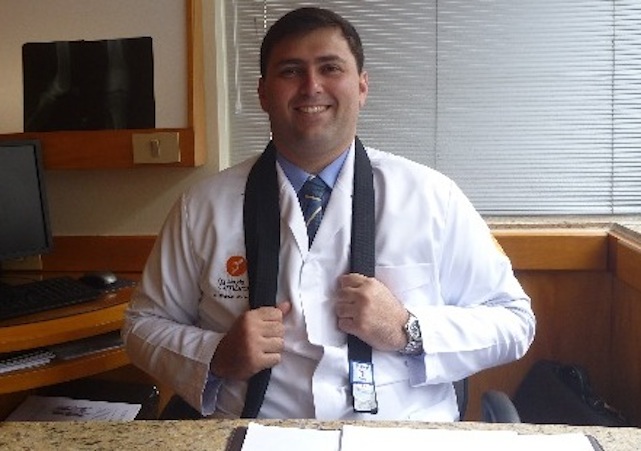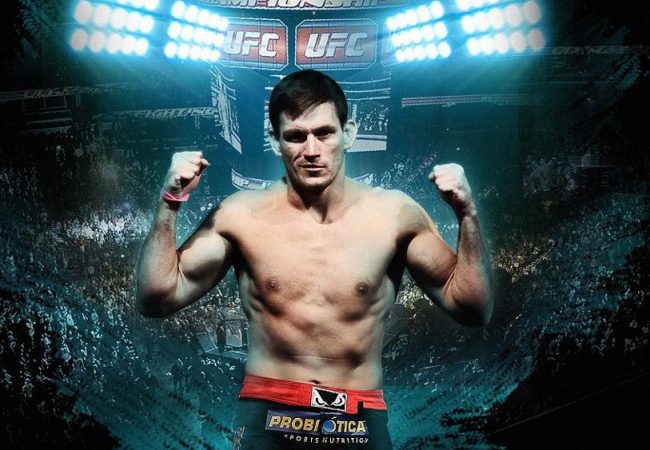Amid the barrage of criticism of MMA circulating around Brazil ever since gory images of UFC 155 surfaced, orthopedic doctor and Jiu-Jitsu black belt Rickson Moraes penned an article especially for GRACIEMAG.com to address the sport in a strictly medical light.
Check out what he has to say, and share your own opinion with us in the comments field below:
A new uproar against MMA has surfaced in the press, with respected Brazilian journalists opining about and questioning the legitimacy of the sport.
These opinions are charged with emotion and somewhat uninformed, for the most part, as there’s no denying the opportunities the sport provides a great number of upstanding athletes and youths and parents, keeping them off drugs and helping to make them true role models as sportsmen.
To say the ultimate goal of combat sports is violence seems to me to be a mistake, as most of the techniques are the central pillars of a number of millenary styles of martial art, many of which are Olympic sports and thus respected for being within the spirit of competition, ones that are never subject to such an outcry against them.
The popularity MMA and the UFC recently attained in the country means the mainstream public is being exposed to strong images, it’s true, which may not carry too much impact for some, but to others may be visually and emotionally overwhelming, leading to scathing criticism like that which followed the fights between Jim Miller and Joe Lauzon and especially Cain Velasquez and Junior Cigano.
From a strictly medical point of view, I’d like to point out that the MMA events held in the U.S. since 2001 are overseen and heavily regulated by state bodies (athletic commissions) that have highly engaged medical teams helping out with medical issues involving the sport.
The most engaged of them all, the one from the state of Nevada, constantly publishes official positions for orienting medical staff involved in all events as well as promotes and incentivizes studies meant to orient the safe practice of and mitigate the risks inherent in the sport.
One example of such studies is the scientific research carried out by the Department of Emergency Medicine of the illustrious John Hopkins University and published in 2008 by the “British Journal of Sports Medicine,” a renowned international scientific magazine. In the article, all the athletes to have participated in MMA events in Nevada between the years 2002 and 2007 were assessed.
There were 1,270 athletes studied in 635 professional fights, and the record showed that during the period of study there were no critical injuries to have originated from the practice of professional MMA, and it was concluded that the rate of injury in regulated MMA competitions are similar to those of other combat sports.
Priority No. 1 is and should always be to preserve the physical integrity of the fighters, which has already translated into a number of changes being made to the unified rules of the practice of MMA. Regular pre- and post- competition exams are mandatory for any UFC athlete, as are complementary post-competition exams and minimum layoff periods so that the athletes may make full recoveries and be apt to safely return to training and fighting.
There is no arguing, however, the fact that it is a contact sport and that traumatic blows are more frequent than in less vigorous sports like swimming, running or cycling. Even so, within the current scope of medicine, MMA is considered a safe sport, when orientation and rules are followed.
Specifically speaking about the last UFC event of 2012, it’s worth pointing out that superficial cuts and bruises are much less damaging to athletes than fractures, because the potential to result in permanent injury to the athlete is next to none.
The average adult has between five and six liters of blood in their body, and we know that losing 10 percent of that volume seldom carries clinically significant repercussions. Bleeding from the face or scalp, for being highly vascularized areas, tend to make for images that are shocking to the broader audience, but from the medical standpoint rarely approach a volume of bleeding that can cause more serious complications.
Nevertheless, for the good of the sport and so that it may continue its successful course, I feel it is imperative that blows like elbows are prohibited. Furthermore, referees and doctors should be given orientation to intervene in fights where there is a great deal of bleeding, so as to keep the shocking images to a minimum.
—
Dr. Rickson Moraes
Dr. Moraes is an orthopedic doctor for SBOT, the Brazilian society for orthopedics and traumatology; a member of SBRATE, the Brazilian society for arthroscopy and sports medicine; and a specialist in shoulder surgery at INTO, the national institute for traumatology and orthopedics.
For more UFC and MMA coverage,
visit GRACIEMAG.com’s Choke MMA section





